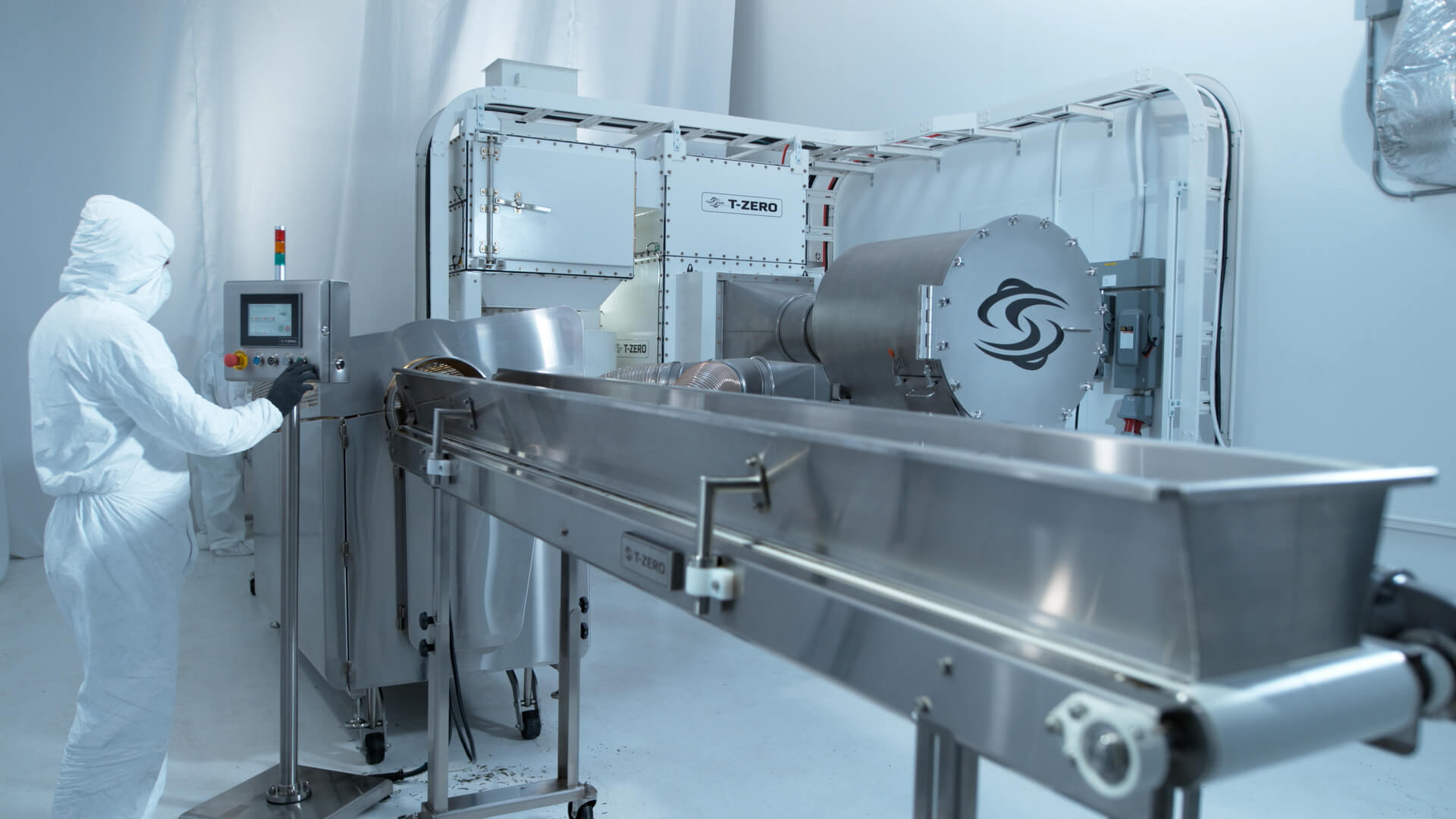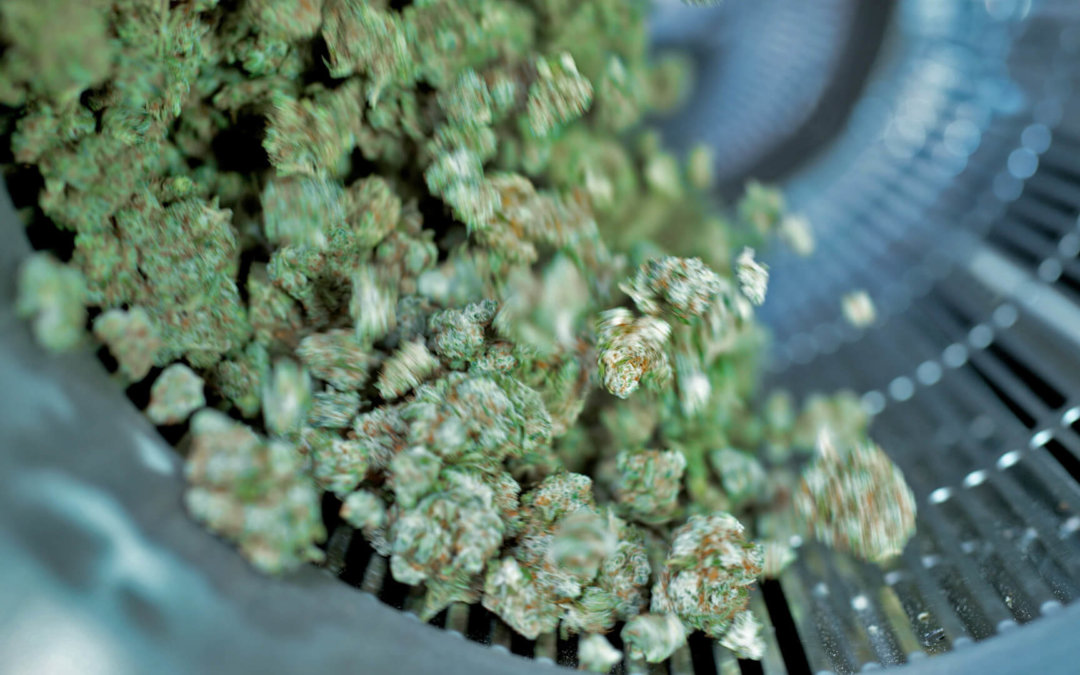The quest for high quality cannabinoids doesn’t end when the plant reaches maturity, but rather, depends largely on post-harvest best practices and industry grade tools to reach its full potential. To ensure you’re preserving the potency and quality of your cannabis yield, it’s critical to consider the external factors that may impact it once it leaves the field, room, or greenhouse, including your trimming methods.
Machine Trimming Weed to Maximize Potency
While hand-trimming has been a staple for trimming pot plants for decades, in recent years machine trimming has proved it can not only save but increase cultivator revenue by increasing the efficiency, safety and consistency of cannabinoid output post-harvest.
Our Twister T-ZERO Pro bud trimmer is 1000x faster and more cost-effective than hand trimming. For one person to process one pound of cannabis, by hand, it can take nearly a full day; bud trimmers like the Twister Trimmer T-ZERO Pro, on the other hand, can process up to 125 pounds of cannabis every hour.
From a quality perspective, we’re now seeing machine-trimmed cannabinoid potency levels that rival those of hand trimming; following a series of lab tests to quantify the differences in THC and CBD potency between output produced via hand-trimming vs machine-trimming, we found that we had dramatically narrowed the cannabinoid potency gap through our Twister T-ZERO Pro.
Finally, the safety and consistency benefits of machine-trimming can’t be overstated. Fewer personnel in the facility means we’re able to eliminate excessive human handling. Fewer hands handling the flower reduces the risk of contamination and possible damage to the delicate trichomes, which contain the plant’s unique cannabinoids and terpenes. Advanced machinery improves cannabis trim room air quality, as HEPA air filtration ensures any particulates that otherwise circulate the room are captured in the self-cleaning filters. To ensure easy cleaning, the Twister Trimmers are made of stainless-steel materials with an IP65 washdown rating for easy commercial standard cleaning.

External Factors that Impact Cannabinoid Quality
Three main considerations when trimming weed:
- Temperature: The trimming room should be kept as cool as staff will allow, as any additional heat during the process will negatively affect your harvest. Trichomes, the resin glands of the pot plants that contain THC and CBD, can become sticky in warmer temperatures, which increases their risk of being damaged or falling off — especially if human hands are involved, as hands add heat to the plant. Cooler temperatures prevent this stickiness during the trimming process to preserve the plant’s value. Additionally, the temperature of the trimming room can be controlled through our wet trimming process which uses automated water misters to provide an additional layer of protection to the flower.
- Time: Optimal settings mean less time in the trimmer. In our single-piece flow trimmer systems, 45-60 seconds is the maximum amount of time that a flower spends in the tumbler, a setting that can be controlled through the Twister Trimmers’ adjustability. The machine angle, tumbler speed, blade speed, and vacuum suction all play different roles depending on the cultivar. Tools like the Twister Trim Saver help to optimize cannabinoid potency by removing the trim before the impeller to keep cannabinoids intact.
- Moisture Content: Drying techniques play a significant role in potency and quality and work closely with trimming to preserve quality and potency. While our machines can support both wet and dry bud trimming methods, we recommend that for dry trimming, the flower is run through the system at a 10-12% moisture content level to the flowers’ resiliency to endure the trimming process. While moisture content is less important for wet trimming, which is when the flower has been harvested, bucked, and run through the system fully hydrated, resulting in a moisture content around 80%, ensuring you have a cold and dry room will make cleaning the machine much easier.
Machine trimming is surpassing hand trimming, allowing cannabis producers to maximize their cannabis throughput, while preserving potency and quality more efficiently, safely, and consistently than ever before. But, whether you opt for hand trimming or machine trimming, here are some final cannabinoid considerations. Save your trim; many cultivators continue to dispose of high potency leaf trim reducing their final output. And remember, everything can’t be fixed post-harvest; the best trimming processes can’t course correct for leafy flower or low cannabinoid genetics.

